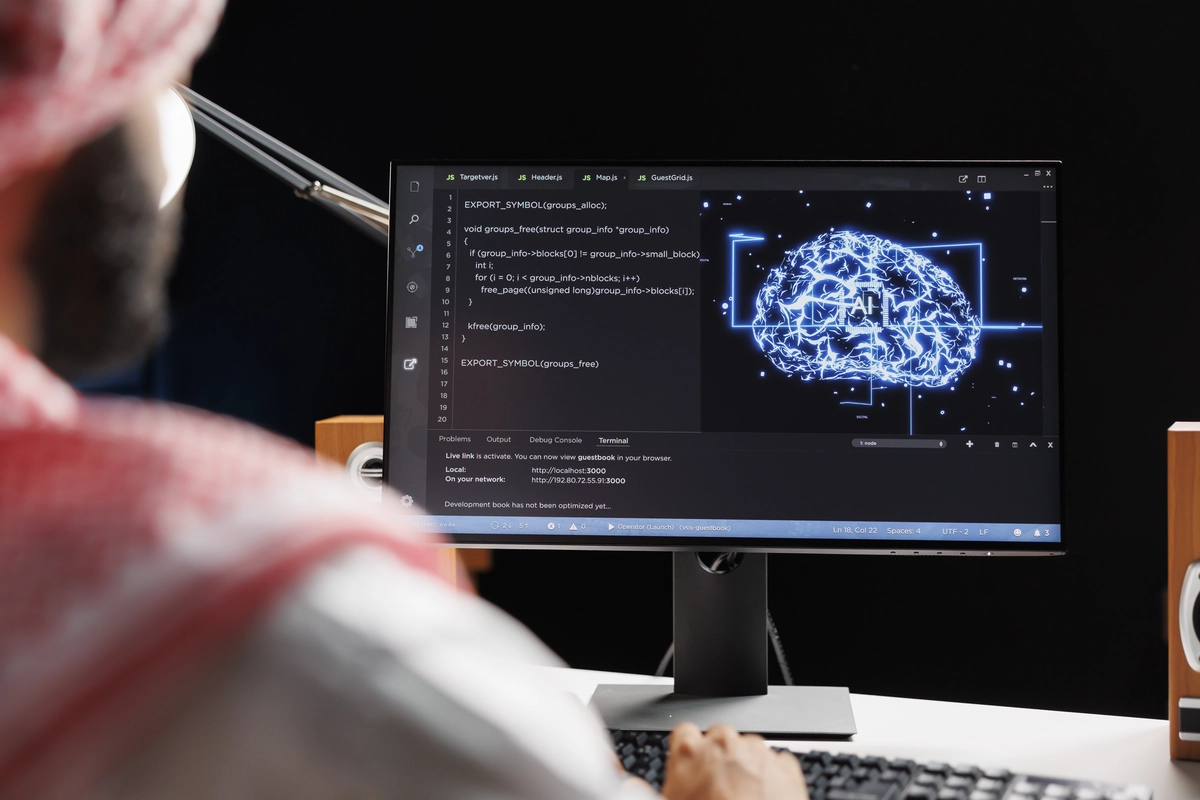What Are the Potential Applications of Neuromorphic Computing?
Another promising area is robotics. Robots equipped with neuromorphic chips could perceive their environment more like humans do, making them safer and more effective in dynamic settings. Imagine robots that learn from interactions, adapt to new tasks on the fly, and operate autonomously with minimal human intervention.
In healthcare, neuromorphic computing could revolutionize medical diagnosis and treatment. By analyzing complex datasets such as genomic data or medical imaging, neuromorphic systems could assist doctors in making faster and more accurate diagnoses. They could also personalize treatment plans based on individual patient data, improving outcomes and reducing healthcare costs.
Beyond these fields, neuromorphic computing holds potential in fields as diverse as cybersecurity, finance, and environmental monitoring. Its ability to process and analyze streaming data in real-time makes it invaluable for detecting anomalies, predicting market trends, or monitoring environmental changes.
As researchers continue to develop more advanced neuromorphic computing systems, the possibilities are endless. From enhancing our understanding of the brain to transforming how we interact with technology, neuromorphic computing is poised to shape the future in ways we’re only beginning to imagine.
Revolutionizing AI: How Neuromorphic Computing Is Set to Transform Artificial Intelligence
Neuromorphic computing is inspired by the architecture and functioning of the human brain. Unlike traditional computing, which relies on binary logic and sequential processing, neuromorphic systems emulate the brain’s neural networks. These systems are designed to process information in parallel, enabling faster computations and more efficient handling of complex tasks.
One of the key advantages of neuromorphic computing lies in its ability to perform tasks such as pattern recognition, decision-making, and sensory processing with remarkable speed and accuracy. This capability is particularly significant for AI applications, where real-time processing of vast amounts of data is crucial.
In practical terms, neuromorphic computing could vastly enhance AI technologies across various domains. For instance, in healthcare, it could facilitate more accurate diagnosis and personalized treatment plans by quickly analyzing medical data and identifying patterns that may elude traditional systems. In autonomous vehicles, neuromorphic AI could improve decision-making processes, enabling vehicles to navigate complex environments safely and efficiently.
Moreover, the energy efficiency of neuromorphic computing is a game-changer. Traditional AI systems often require substantial computational resources and power, limiting their scalability and environmental impact. Neuromorphic systems, on the other hand, mimic the brain’s energy-efficient processes, potentially reducing power consumption by orders of magnitude.
From Smart Cities to Personalized Healthcare: Unveiling Neuromorphic Computing’s Diverse Applications
Neuromorphic computing, inspired by the human brain’s architecture, is revolutionizing various fields, from urban planning to healthcare. Unlike traditional computing, which relies on binary logic and predefined algorithms, neuromorphic computing mimics the brain’s neural networks. This enables machines to learn, adapt, and make decisions in real-time, akin to how humans process information.
In smart cities, neuromorphic computing can enhance efficiency and sustainability on an unprecedented scale. Imagine traffic systems that autonomously adjust based on real-time data, reducing congestion and emissions. Waste management systems that optimize collection routes based on current fill levels, minimizing environmental impact. Even public safety could benefit, with predictive analytics helping to anticipate and prevent crime.
The applications extend far beyond urban settings. In personalized healthcare, neuromorphic computing holds the promise of revolutionizing diagnostics and treatment. Imagine wearable devices that continuously monitor vital signs and seamlessly transmit data to healthcare providers. These devices could detect health issues before symptoms arise, allowing for early intervention and personalized treatment plans tailored to each patient’s unique physiology.
Moreover, in medical research, neuromorphic computing accelerates the analysis of vast datasets, uncovering patterns and correlations that humans might overlook. This could lead to breakthroughs in understanding complex diseases and developing targeted therapies, ultimately saving lives and improving quality of life.
As these technologies continue to evolve, their integration into everyday life promises to reshape how we live, work, and interact with our environments. From enhancing city living to personalizing healthcare, neuromorphic computing is set to unlock a future where technology serves humanity in more profound and impactful ways than ever before.
Neuromorphic Chips: The Future of Efficient and Adaptive Computing

One of the most fascinating aspects of neuromorphic chips is their ability to learn and adapt. Similar to how our brains form connections and learn from experience, these chips use artificial neural networks to simulate learning processes. This means they can recognize patterns, make decisions, and even predict outcomes based on previous data—all in real-time. Imagine a device that learns from its interactions with users, constantly improving its performance without the need for external programming.
In practical terms, this translates to a wide range of applications across various industries. From autonomous vehicles that can make split-second decisions to healthcare devices that can analyze complex medical data faster than ever before, the potential impact of neuromorphic chips is immense.
Moreover, these chips pave the way for more personalized and responsive technologies. Imagine a smartphone that understands your habits and anticipates your needs, or a smart home system that adapts to your preferences without explicit commands. Neuromorphic computing promises to make our devices not just smarter, but more intuitive and user-friendly.
As researchers and engineers continue to refine this technology, the future of neuromorphic chips looks incredibly promising. With each advancement, we move closer to a new era of computing—one where efficiency, adaptability, and intelligence converge to redefine what’s possible in the digital age.
Beyond Traditional Processors: Exploring Neuromorphic Computing’s Edge in Pattern Recognition
Neuromorphic computing takes inspiration from the human brain’s neural networks. Unlike traditional processors that rely on sequential instruction execution, neuromorphic chips process information in a massively parallel manner, akin to the way neurons fire in our brains. This parallel processing capability allows them to excel in tasks like pattern recognition, where recognizing complex patterns swiftly is crucial.
Imagine trying to spot a familiar face in a bustling crowd. Your brain doesn’t analyze each face sequentially; instead, it identifies key features simultaneously, making recognition almost instantaneous. Neuromorphic computing works similarly, enabling machines to recognize patterns in data with incredible speed and accuracy.
What sets neuromorphic computing apart from its predecessors is its efficiency. Traditional processors consume large amounts of power and space, limiting their scalability for applications demanding real-time pattern recognition. In contrast, neuromorphic chips are designed to be energy-efficient and compact, making them ideal for embedded systems like self-driving cars, medical devices, and IoT sensors.

As we delve deeper into the era of artificial intelligence and machine learning, the demand for efficient pattern recognition systems continues to grow. Neuromorphic computing represents a leap forward in meeting these demands, offering not just faster processing speeds, but also the ability to learn and evolve from data, much like the human brain.
The emergence of neuromorphic computing heralds a new age in pattern recognition technology. By leveraging principles inspired by nature, these innovative chips promise to redefine what’s possible in computing, pushing the boundaries of AI and machine learning beyond traditional limits.
